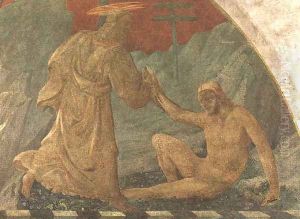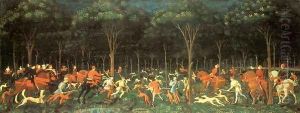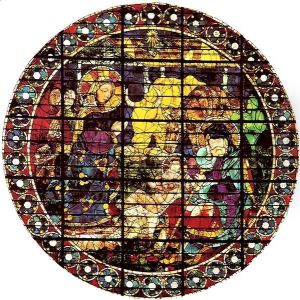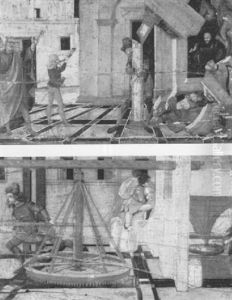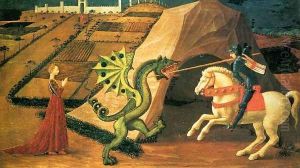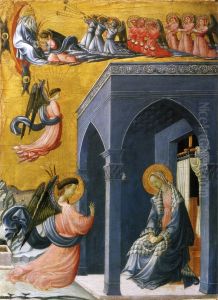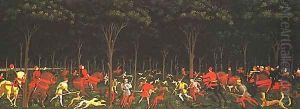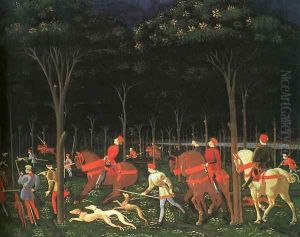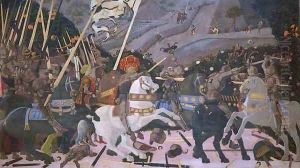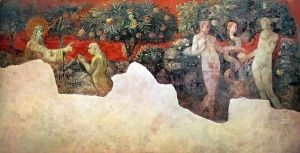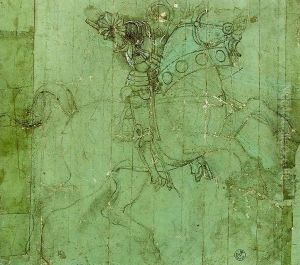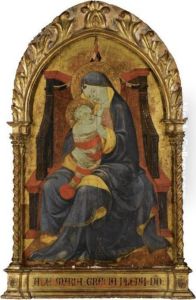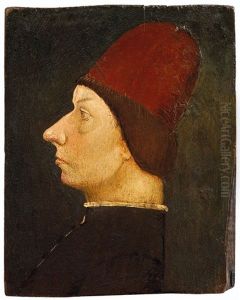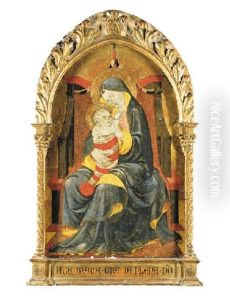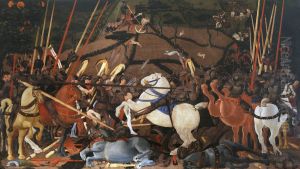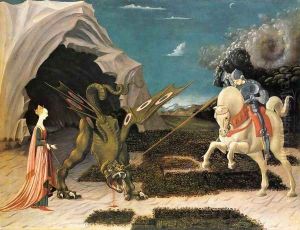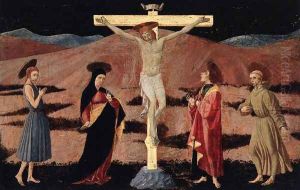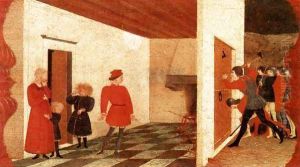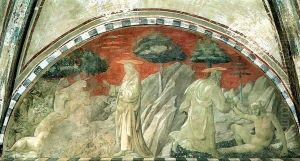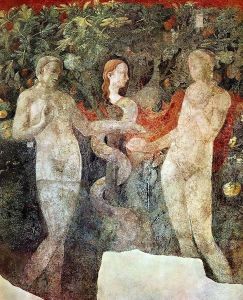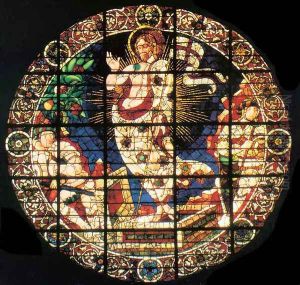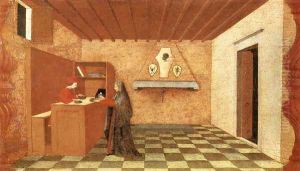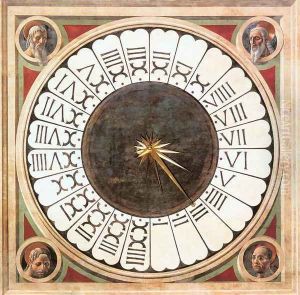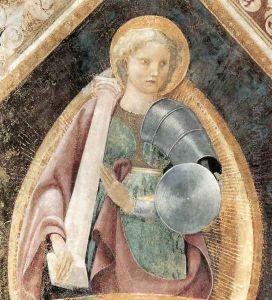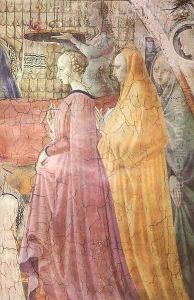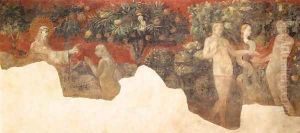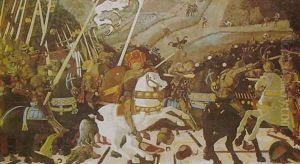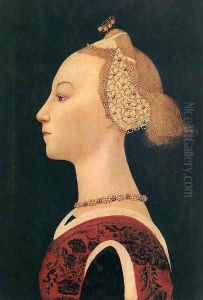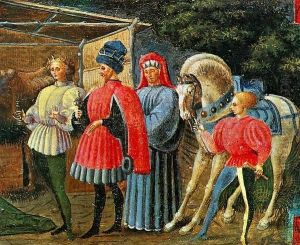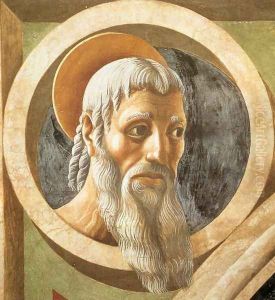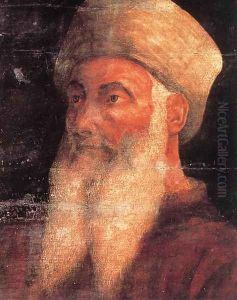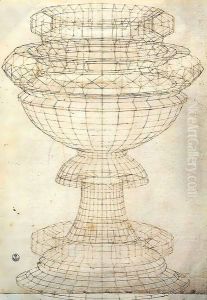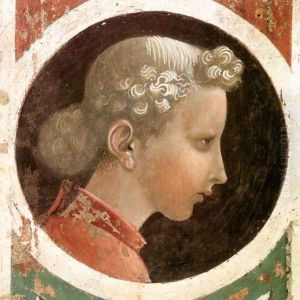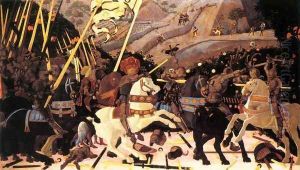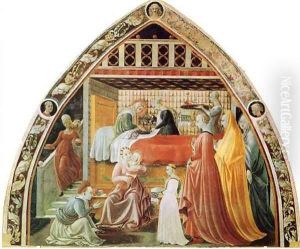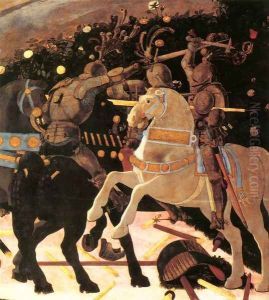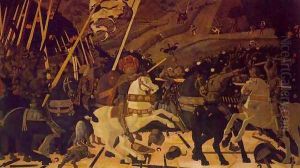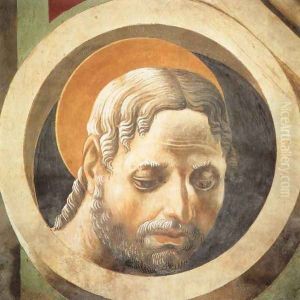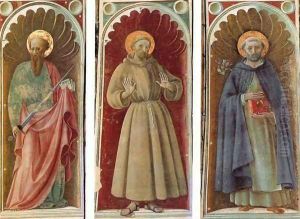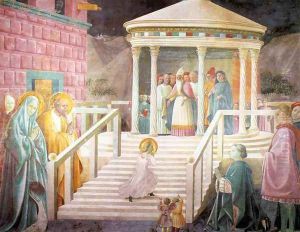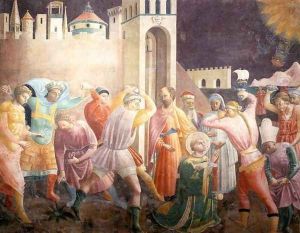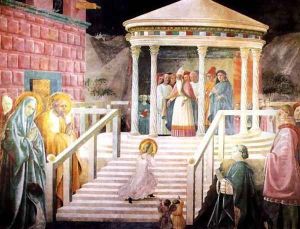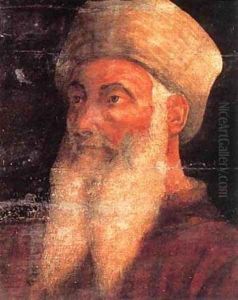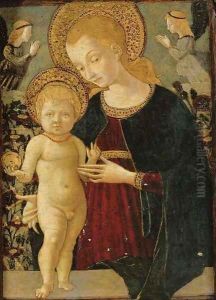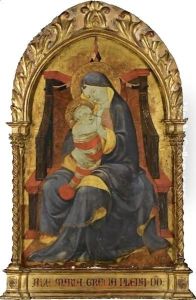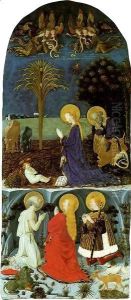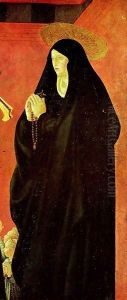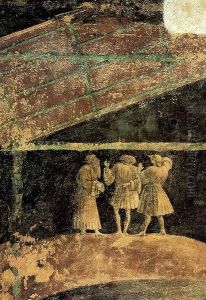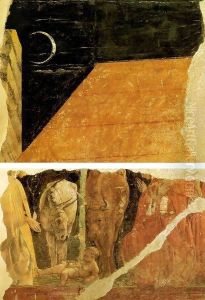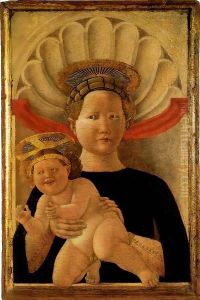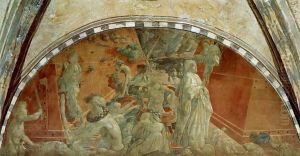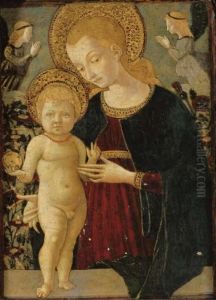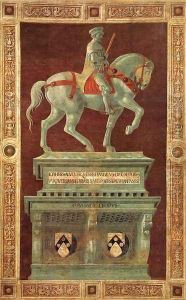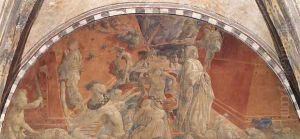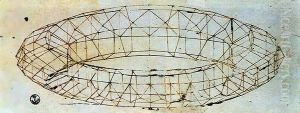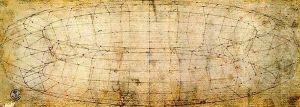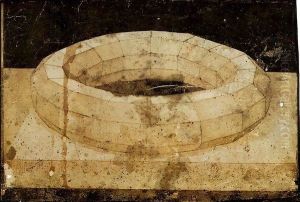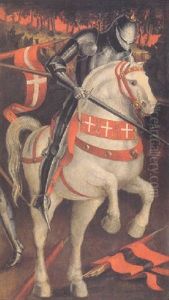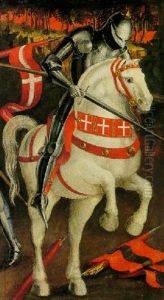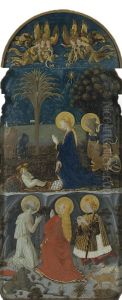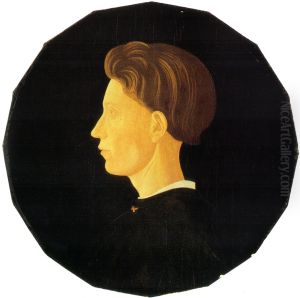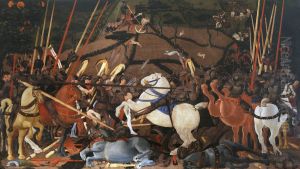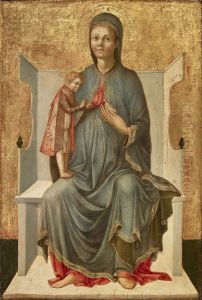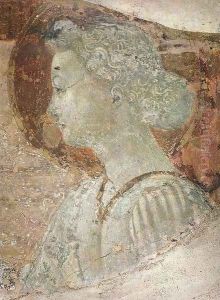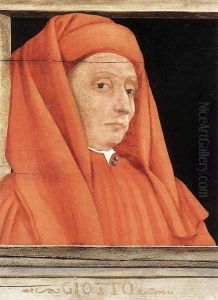Paolo Uccello Paintings
Paolo Uccello, born Paolo di Dono, was an Italian painter and mathematician who was notable for his pioneering work on visual perspective in art. Born in 1397 in Florence, Italy, Uccello was apprenticed to the famous sculptor Lorenzo Ghiberti, where he contributed to the design of the bronze doors of the Florence Baptistery. His fascination with perspective and his studies of geometry deeply influenced his work, leading him to experiment with the depth and form to create a sense of three-dimensionality on flat surfaces.
His most famous works include the series of paintings known as 'The Battle of San Romano,' which depict a Florentine victory in a battle against the Sienese. These paintings are celebrated for their use of perspective to create an illusion of depth, and they showcase Uccello's mastery of color and light to enhance the three-dimensional effect. Even though these works were highly regarded, Uccello was not particularly famous during his lifetime and spent many years working on the fringes of the art world.
Uccello was deeply devoted to his studies of perspective and often neglected commissions to focus on his geometrical experiments. This obsession with perspective, however, did not always translate into financial success, and there were times when he struggled to make ends meet. Despite this, his work had a lasting influence on future generations of artists, including Leonardo da Vinci and Piero della Francesca, who would take his ideas even further.
Uccello's contribution to art was not limited to his paintings. He was also involved in creating mosaics, such as the work he completed for the Florence Cathedral. His style is characterized by the use of vivid colors and strong lines, which create a stylized and sometimes surreal appearance in his compositions.
By the time of his death in 1475, Paolo Uccello was recognized as an important figure in the early Renaissance, particularly in the development of linear perspective. His work marks a transition from the Gothic style of the late Middle Ages to the more naturalistic approach that characterized the Renaissance. Despite his relative obscurity during his lifetime, Uccello's innovative techniques and unique artistic vision have earned him a place in art history as a pioneer of perspective.
